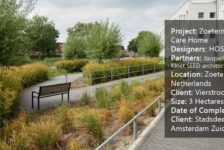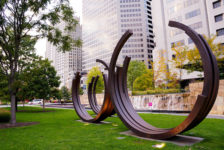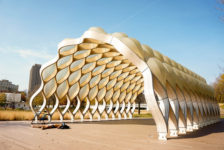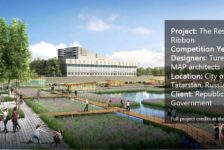Take a look around you in any urban area – on any street, bus or train, in any mall, park or cafe – we’re all at it; tapping and sliding and thumb-flicking. The smartphone is changing the way we interact with the world, changing the way we communicate with one another and changing the way we behave in public places.
But what does this mean for the dynamic of our built environments? A recent event hosted by the Urban Design Group in London aimed to explore this question. Based on the premise that ‘smart phones will have as much impact on towns and cities as the motor car’, the event examined the possibilities and limitations associated with an increasingly technologically-driven society.
According to Ian Ralph of Alan Baxter Associates, worldwide sales of smartphones overtook those of feature phones earlier this year, with the smartphone now having 77% penetration within the UK. There are now 650,000 applications available for download. Just four years ago there were only 800.
The convenience of the smartphone is its draw-factor. The complexity of its technology and the plethora of applications available mean that, for many of us, our smartphone has replaced a number of other devices, assimilating multiple technologies into one. We no longer require a separate alarm clock, sat-nav, camera, music player, dictaphone, pedometer, calorie-counter. We don’t need to wait until we’re at a computer to check our emails, skype a friend, update facebook or check our twitter feed.
But with everyone now glued to their handsets, engrossed in their own private worlds, how much are we interacting with the real, tangible world around us? What’s happening to the ‘public’ in our public realm?
Public spaces have always formed a vital part of our towns and cities. They’re the places where we spontaneously interact with people who are different from us and they play a fundamental role in fostering a sense of community. Not so long ago, if you were lost or wanted to know where you could find a bite to eat, you’d ask a stranger in the street. Now, we simply download an app.
Research has already shown that smartphone users are – unsurprisingly – less engaged with their surroundings. They remember less about both the people and the spaces they encounter. According to Tali Hatuka, who heads the Laboratory for Contemporary Urban Design at Tel Aviv University “the ubiquitous smart phone may even degrade the way we recognise, memorise and move through cities.”
As designers of the public realm, what can we do about this rapidly emerging urban problem? We can’t halt technology or turn back the clock. It seems to me that the solution could well lie in the source of the problem; in technology itself.
My last blog post – Big Data in the Big Smoke – revealed how Transport for London are utilising smartphone apps and big data sharing to improve the experience and efficiency of the city.
My next blog piece will examine some of the other ways in which designers and app developers are attempting to harness technology in order to improve built form and enrich – rather than detract from – public life.
Top image courtesy of Anna Anastasiou.
Published in Blog










Annie Bergelin
Here in NYC there are cell phone chargers in public parks now: http://www.fastcoexist.com/1682226/solar-powered-public-charging-stations-will-keep-new-yorkers-phones-running
I
Annie Bergelin
Also, if you watch William Whyte’s film, ‘The Social Life of Small Urban Spaces.’ it’s funny to think how different his study would be if it were replicated today.
Stephanie Smoot
That’s an interesting example on how we are accomodating new technology with design. On the down side, I saw a “distracted pedestrian” get hit by a car yesterday on a city street. Everyone’s ok in this situation. However, it does bring up questions about pedestrian safety in cities where we are also encouraging bikes and we have cars like Prius’s that don’t make much noise which typically alerted people to a car. Has anyone changed the way they design as a result?
Laura Duplain
what if outdoor work areas were to be integrated into parks kind of like they are at an airport or a starbucks. Providing spaces to sit with a horizontal setting for laptop/tablet complete with charging stations. Thus continuing to make the park more modernized for the technology movement, giving people a reason to remain outside and a place to pause eliminating a higher risk of being hit.
Jason Packenham
Great post on a very timely topic. So, are smartphones destroying the ‘public’ in our public realm? I’d say no, and look at smartphones as more of an opportunity than a problem that needs ‘solving’.
It’s intuitive for people to presume that smartphones may lead to people being less engaged with public space, but I think this problem arises due to the fact that there has been few Whyte- or Gehl-like studies of the use of smartphones in public space.
One such study by Project for Public Spaces suggests that the reverse is true, and found that phone use in public space was lower than expected and that phone use is associated with an increased likelihood to loiter in public space, and with time spent in those spaces (check out these articles for more: http://www.pps.org/blog/technology-brings-people-together-in-public-spaces-after-all/ and http://www.pps.org/blog/technology-recharges-public-space/).